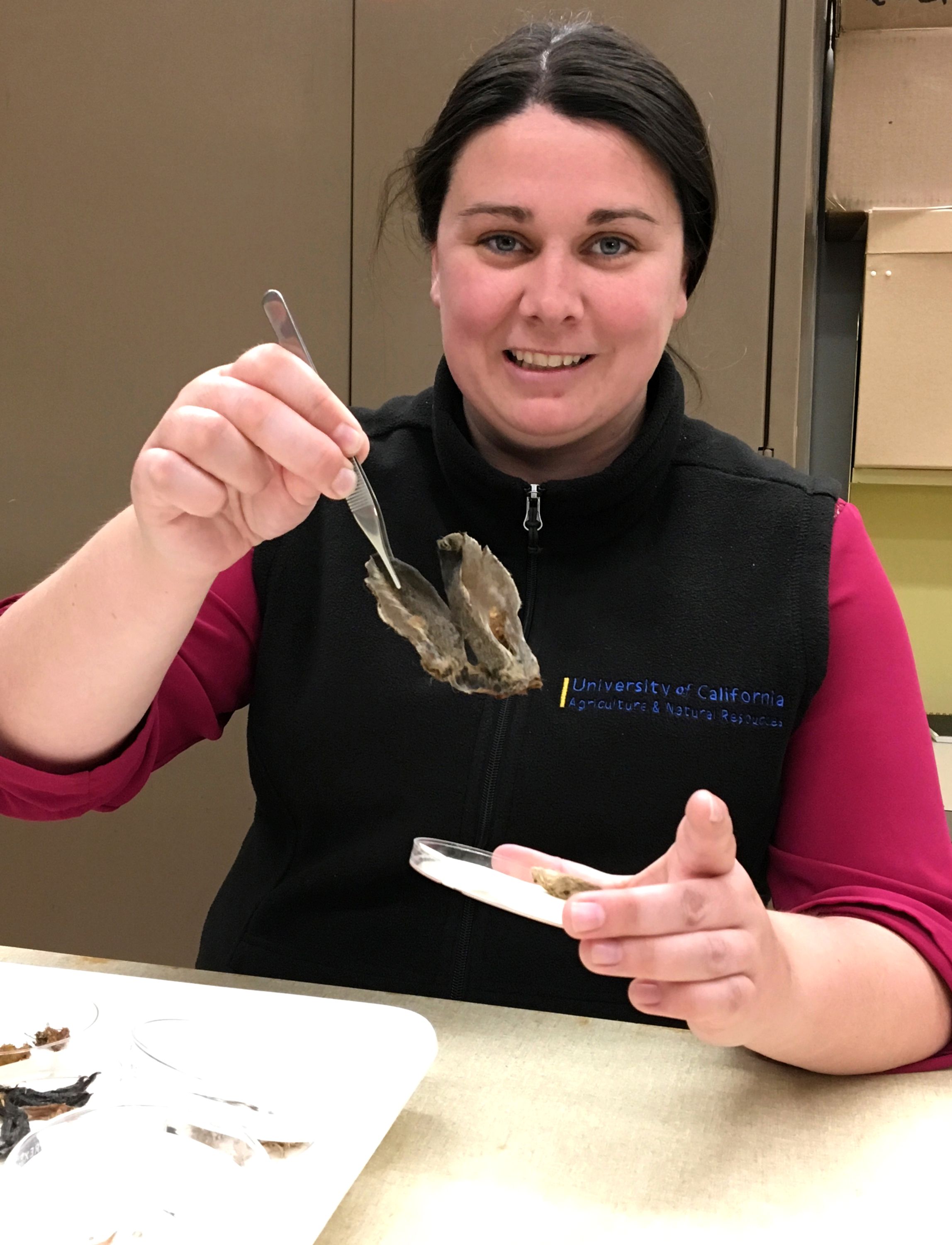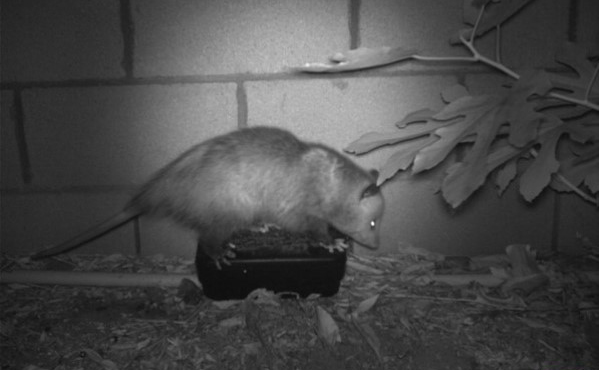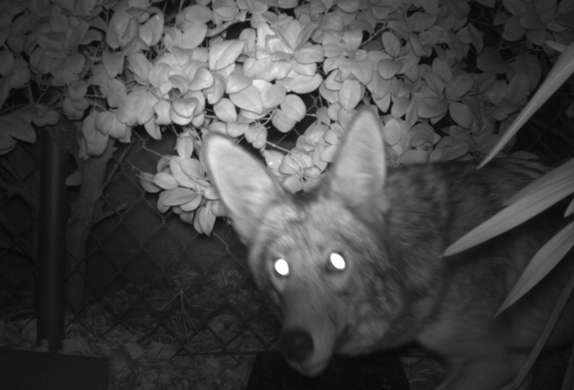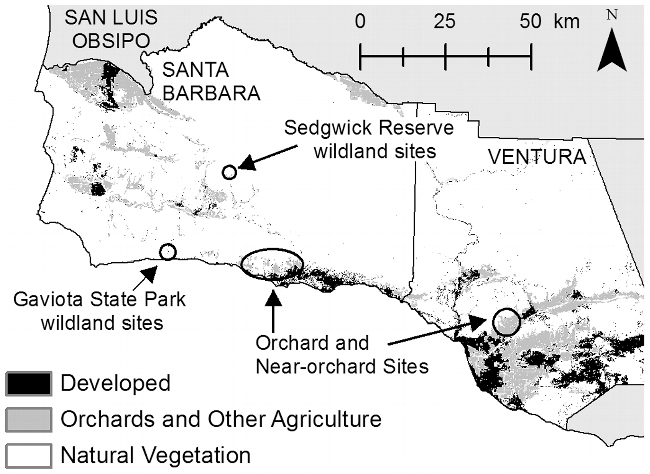
Posts Tagged: coyote
Unlikely Critters Found in Avocado Orchards
Wildlife isn't always restricted to wild spaces.
Avocado orchards and other agricultural landscapes also buzz with species that forage and reproduce in these spaces. Birds and herbivores are able to find food and shelter in these cultivated areas, but what about carnivores? In a study published in PLOS ONE, researchers at the University of Washington have discovered that mammalian carnivores also occupy avocado orchards in southern California.
The authors used motion-activated cameras to observe animals in orchards and in adjacent wild lands in Santa Barbara and Ventura. Avocado orchards were of particular interest due to their location near native vegetation.
Through their investigation, the researchers detected more carnivores in the avocado orchards than in neighboring wild land sites. At least 7 out of the 11 native carnivores in the area were spotted roaming the orchards, including bear, coyotes, gray foxes and bobcats.
Having delicious avocados handy may explain why some omnivores such as bears and raccoons are present in the area, however, little is known about why animals like bobcats and mountain lions might leave their wild habitat for cultivated land. One possibility is that the orchards provide water and fruits for herbivores, and an increased herbivore population could translate to more prey for the carnivores. The orchards may also serve as shelter, offering forest cover similar to oak woodlands in the area.
These native species cannot always persist in protected reserves, so it is important to learn how cultivated lands can serve their lifestyle and behaviors. The carnivores may not be searching for the perfect guacamole ingredient; however there is no doubt that the avocado orchards are serving as a habitat for a wide range of species.
Citation: Nogeire TM, Davis FW, Duggan JM, Crooks KR, Boydston EE (2013) Carnivore Use of Avocado Orchards across an Agricultural-Wildland Gradient. PLoS ONE 8(7): e68025. doi:10.1371/journal.pone.0068025
http://journals.plos.org/plosone/article?id=10.1371/journal.pone.0068025

avocado bear
Coyote Tastes
Forrest Gump believed life was like a box of chocolates – you never know what you're going to get inside.
It's much the same for graduate student Danielle Martinez, except she isn't reaching for tasty chocolates.
She's digging into coyote stomachs.
“It's just like opening your presents at Christmas,” said Martinez, with more enthusiasm than most people would muster after sifting through the half-digested contents of more than 100 coyote stomachs. “You really do never know what you're going to find.”
Martinez, who is getting her master's degree at California State University, Fullerton, is part of a larger research effort studying urban wildlife in Southern California. Niamh Quinn, a wildlife ecologist with the University of California Division of Agriculture and Natural Resources, is leading the project.
“It's a melting pot of crazy, unanswered questions,” Quinn said. “Southern California has huge coyote issues, and people who hate coyotes and people who love coyotes and they're literally living next door to each other.”
What's missing is some of the basic science needed to help people manage and co-exist with coyotes and other urban wildlife, and that's where Quinn and her colleagues are trying to fill in the gaps.
What Do Coyotes Eat?
There are a lot of basic facts about coyote ecology scientists just don't know, and one is their diet. While there have been scat studies where people pick through poo to see what they've eaten, Quinn said those have limitations.
“It's not the identification of the parts within the scat that are inaccurate,” she explained, “it's the identification of the scat itself. If you have a coyote eating a lot of dog food, its scat is likely to be mistaken for a dog's.”
And coyotes do eat everything, as Martinez can attest.

Niamh Quinn shows some of what the coyote diet study has found - in this case, rabbit ears.
“I think the strangest thing I've found was a piece of a baseball,” she said. “And I've found parts of a shoe, straw wrappers and a piece of car seat once.”
The animals' diet matters because some coyotes are being killed by rodenticides put out to kill rats, which makes sense if coyotes eat a lot of rats. But do they?
“There was zero scientific evidence that coyotes eat commensal rodents,” Quinn said, referring to the three types of mice and rats that live in close proximity to humans – Norway rats, roof rats and house mice. “And if coyotes don't eat rats, how are they getting exposed to rodenticides?”
So far, the stomach contents have shown roof rats to be about 8 percent of the Southern California coyote diet.
“Coyotes are omnivores,” Quinn said. “They eat everything. So they could be picking up things that are already dead. We don't know.”
To figure out what those things are, Quinn's team collects a lot of coyote carcasses with the help of CalTrans, local police departments and professional pest managers. Each animal is autopsied and the stomachs saved.
Martinez empties the contents of those stomachs onto a screen and washes away the goop, then picks out bones and other identifiable parts onto small trays. She's become quite expert at identifying the coyote's last meal, from cats to rabbits to gophers. Another team member blends the remainder together for later DNA analysis.
And with 100 stomachs done, Martinez only has about 300 more to go.
The Problem with Rodenticides
In 2014, the state of California restricted the use of four anticoagulant rodenticides to licensed pesticide applicators to try to reduce wildlife losses from unintentional poisoning. The state's Department of Fish and Wildlife has documented 400 cases of wildlife poisoning from rodenticides since 1994.
Quinn is trying to document how those happen.
“How does it get from the point of origin to the point of exposure?” she asked. “We know there's exposure to wildlife, but there's not a lot of science about how it happens. And if we don't know how it's broken, we can't fix it.”
So a second part of the research is to see just which critters do visit the bait stations that are commonly set out to control rats. Another member of Quinn's research team set up bait stations, loaded with bait but no poison, in the backyards of dozens of Southern California homes. Some were on the ground and some elevated on fences or trees, but all had cameras trained on them.

An opossum visiting a bait station.
“In the first 30 days, we got rats and a possum, a skunk, an owl a coyote and even a bobcat,” Quinn said.
Integrated pest management can help control rodent pests. Steps like clearing away ivy and woodpiles can eliminate their nesting sites. Good sanitation can take away their food supply, and sealing up holes and cracks can keep them out of homes and schools and businesses.
But because small rodents can reproduce rapidly – they do breed like rabbits after all – Quinn believes some rodenticide use will be needed to keep populations in check.
“I really don't think California without rodenticides looks very good,” she said. “But we do need better educated professionals and better educated homeowners to reduce unintentional exposure.”
She also hopes to better understand if the wildlife poisonings are having a population-level effect, and if they're having sub-lethal effects.
Help Wanted: Coyote Hazers

A coyote in a backyard.
A third area of research will begin this fall, and its focused on human-coyote interactions.
In this part of the study, Quinn's team are going to collar 20 coyotes in different communities and then let them settle back in to their normal routines. Using observations and GPS and accelerometer data collected by the collars, the researchers are going to get a picture of the animals' day-to-day activities and routines.
Then a dedicated group of community volunteers are going to annoy those coyotes.
“They are going to intersect with the coyote at some period in the day and start to scream at the coyote and wave their arms,” Quinn said.
Yelling and arm-waving is a form of wildlife hazing, and it's recommended now for people who encounter wild coyotes. But there's no science to show it's effective.
“Did the coyote run away with its tail between its legs, or did it approach or anything in between?” Quinn said. “With the collar data, we'll be able to see if their behavior changes. Do they change their routine so they intersect with humans less?”
That's the hope, but not the only possibility.
“They could become inured to the hazing,” Quinn said. “Or maybe won't react in the first place, and they should.”
What scientists do know is that human-coyote confrontations are increasing in Southern California, and that with the area's geography – large communities surrounded or bisected with wooded canyons – those interactions are inevitable.
“It's unrealistic to expect not to have an encounter with a coyote in Southern California,” Quinn said. “And it's a very emotional issue, and rightly so. People's pets are being eaten, and people are being bitten. We had three people bitten in a six-month period, and a bite by a wild animal should be a freak event.”
And while the researchers are hoping to find ways to modify the animals' behavior to reduce those encounters, Quinn believes humans' behaviors will change, too.
“Twenty years ago, nobody locked their doors and now everybody does,” she said. “And people used to walk their dogs off-leash and leave their pets in their backyards. But that may change.”
Furry Pests Present Unique Challenges
Coyotes and rats fall into a category known as vertebrate pests – literally pests with a backbone – and they present unique challenges for pest managers. There are no fan clubs or support groups for insect or disease pests like stink bugs or root rots, but there are for coyotes.
And wild horses. And feral cat colonies.
The Western Governors' Association, for instance, just included feral cats on its list of 50 invasive species that threaten Western ecosystems. Feral hogs, European starlings and the water-dwelling rodent nutria are also on the list.
“When you're looking at managing a species like wild horses, it's highly charged,” Quinn said. “I've had colleagues get death threats.”
And that's why there's such a need for good science. No one can develop an effective management practice if they don't know the basic ecology of the issue.
“I was hired to solve a problem, and man do we have a problem,” Quinn said. “It's like a huge mosaic puzzle, and I feel like I just have the first four pieces in the corners. Now we have to fill in everything between.”
http://westernipm.org/index.cfm/ipm-in-the-west/communities/learning-to-manage-and-live-with-coyotes-in-southern-california/

coyote
An Ecology of Farming or Unintended Consequences
Problem: There was a Valencia farmer in Ojai, farming on a rocky loam. More rocky than loam, on a 10 % slope, where he had been spraying the weeds down, the soil had gradually washed away and all he had left was scattered cobbles.
Solution: He planted a winter cover crop to protect the soil from erosion. He weed whipped it three times a year because that's all he could afford.
Result: After two years he had stopped the erosion, and there was actually a little duff layer forming in the orchard from the decomposing ground cover.
Problem: But now that wonderful cover crop and the cover it provided had attracted gophers that were chewing on the trees and because of inattention had killed a few of them. He couldn't trap fast enough.
Solution: He brought in a ‘Jack Russell' terrier that did a marvelous job at keeping the beasts down.
Problem: About the same time he noticed that he was getting gobs of snails that were getting into the trees. Even though he had lifted the skirts and painted copper on the trunks, they were still getting into the trees. He couldn't keep up with the winter weeds.
Solution: He brought in weeder geese to help with the ground cover and chickens to help with the snails and they worked.
Problem: Now the terrier is distracted by the fowl and is killing the chicks and goslings, as well as the gophers. In fact, he would prefer chasing the fowlings to going after gophers.
Solution: He tied a tether ball around the terrier's neck which slowed it down enough so that the young ones could get away.
Problem: Also with the introduction of birds, he also brought in coyotes which killed the larger birds.
Solution: He brought in a ‘Queensland Heeler' which is a bred that is noted for killing dingos in Australia. They are short-legged, barrel chested dogs that roll over on their back and pretend to be dead and when the coyote comes sniffing around, it grabs the coyote's neck and kills it.
Problem: What's next in this cause and effect chain of events?
This is a true story, but in today's world because of Food Safety and Good Agricultural Practices Certification would not happen with all these animals in the orchard, but something like it happens every time we overturn the flow of events. This is not the only scenario that is played out in agriculture. But hey, that's what a good grower is doing, managing a somewhat chaotic chain of events.

cover crop citrus
Experts Converge in March to Discuss Human-Wildlife Conflict Resolution
Wildlife and people have been in the news lately. Perhaps you've heard of coyotes wandering in your neighborhood. You might have also read about how you shouldn't feed wildlife. Did you know they are connected? It's a problem when people feed coyotes either intentionally or unintentionally through uncovered garbage and outdoor pet food. Available food may encourage coyotes to associate closely with humans and to lose their natural fear of us. These interactions will be discussed during a special symposium on urban coyotes at the 27th Vertebrate Pest Conference.
The Vertebrate Pest Conference is held every two years, mostly in California. This year, the meeting will be Monday through Thursday, March 7 to 10 in Newport Beach. Meetings are held in cooperation with the Pesticide Applicators Professional Association (PAPA). The leading authorities with vertebrate management expertise from around the world congregate to present the latest research and extension information. Are you an animal control official, wildlife manager, agricultural producer, pest control adviser, consultant, educator, researcher, or natural resource manager? Then this meeting is for you. California Department of Pesticide Regulation and California Department of Public Health continuing education units are available for participants.
Special symposia include bird management, wild pig management, and urban coyotes. In Cooperative Extension Advisor Niamh Quinn's backyard of extremely urban Southern California, these coyote-human conflicts occur. With over 3 million people in Orange County, 8 state parks and beaches, countless city parks and 19 county parks and wilderness areas, conflicts with urban coyotes are bound to happen. Managing coyotes includes managing people's behavior too.
Quinn says, “We can't manage what we can't measure. This conference provides a unique opportunity to discuss ongoing conflicts, especially those related to urban coyote management. Research is needed to understand urban coyote behavior and if these behaviors are changing as a result of the way we are currently living. Outreach is needed to instruct urbanites on appropriate behavior where coyote conflicts are occurring, and managing coyotes is everyone's concern. We need better and improved strategies for measuring and managing these conflicts.” At the Vertebrate Pest Conference, hear from the experts on the latest information about coyote attacks on humans, coyote conflicts, and several talks on coyote management, including hazing.
Vertebrates are also problematic in commercial agriculture. A 2011 survey of wildlife damage by Cooperative Extension Specialist Roger Baldwin, stated agricultural losses from wildlife damage in California is likely in excess of $1billion annually. Based on the survey results, economic losses were greatest for voles and pocket gophers in alfalfa; and wild pigs, birds, and ground squirrels in nut crops. One talk at the Vertebrate Pest Conference will be a North American overview of bird damage in fruit crops. Other talks cover field rodent repellents, food safety, and trapping.
UC IPM has information on vertebrate pest management for urban and communities, as well as commercial agriculture.

coyote

Avocado damaged by coyote


